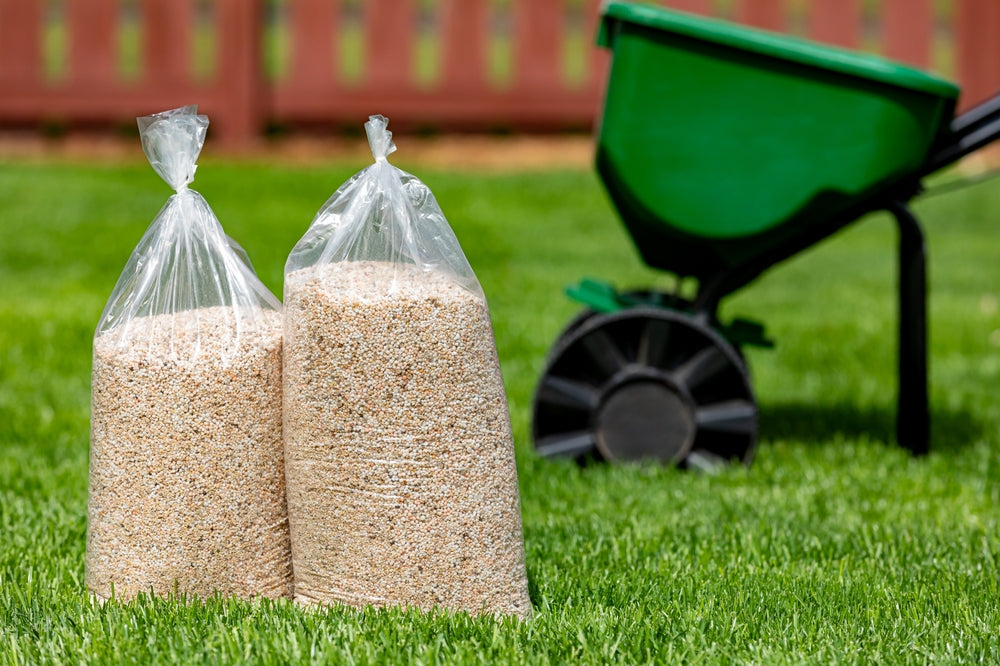When it comes to maintaining a healthy, lush lawn on your property, the use of fertilizer tends to be one of the most important factors. However, there are a number of mistakes that are sometimes made with fertilizer products, and these risk killing your grass or creating significant related issues if they aren't avoided.
At Anderson's Seed and Garden, we're here to offer a wide range of lawn fertilizer products for any need, including new lawn starters, winterizer products and more. We've seen every kind of lawn fertilizer mistake out there, and our experts are here to help you steer clear of all of them. Here are some top examples of lawn fertilizer mistakes, plus how to avoid them and ensure you're using fertilizer properly for a well-fed lawn.
Over-Fertilizing the Lawn
One of the most common mistakes we see is over-fertilizing the lawn. This can happen for a few reasons - either you're using too much fertilizer, or you're fertilizing too frequently. Both can lead to an unhealthy lawn and even damage to your grass, including issues where grass is killed by high nitrogen levels that “burn” the blades.
To avoid this mistake, it's important to follow the instructions on the fertilizer package carefully. Use only the recommended amount and frequency of applications. It's also important to understand that more is not always better when it comes to fertilizing your lawn. Using too much can actually burn your grass and cause patches of dead spots.
Using the Wrong Type of Fertilizer
Not all lawns are created equal, which means not all lawns require the same type of fertilizer. Before applying any fertilizer, it's important to test your soil pH levels and determine the nutrients that are lacking in your lawn. This will help you choose the right type of fertilizer that will provide your grass with the necessary nutrients without causing harm.
Improper Fertilization Timing
Another common mistake when it comes to lawn fertilization is applying it at the wrong time. Depending on the fertilizer you're using, proper application may run from early spring through late fall. Applying fertilizer at the wrong time can result in either burning or undernourishing your lawn, leading to weak and unhealthy grass.
To avoid this mistake, it's important to follow the recommended schedule for fertilization based on your region and the type of grass you have in your lawn. This information can be easily found online or by consulting a professional lawn care service.
Ignoring Soil Health and pH
When it comes to maintaining a healthy lawn, the soil health and pH levels are just as important as regular watering and fertilization. Soil that is too compacted or has an improper pH level can hinder grass growth and lead to a weak and patchy lawn.
To prevent this, it's crucial to regularly aerate your lawn to loosen up compacted soil and make sure the pH level of your soil is within the recommended range for your type of grass. You can easily test your soil's pH level with a kit from your local gardening store.
Applying Fertilizer to a Dry Lawn (Or Vice Versa)
Depending on the type of fertilizer you're using, it's important to apply it correctly to your lawn. Some fertilizers require a dry application, while others need to be applied when the grass is wet.
If you're using a dry fertilizer, make sure to apply it on a day when there is no rain in the forecast and your lawn is completely dry. This will help prevent the fertilizer from clumping up and ensure even distribution across your lawn.
On the other hand, if you're using a liquid or water-soluble fertilizer, make sure to apply it on a day when there is light rain or early in the morning before watering your lawn. This will help the fertilizer soak into the soil and reach the roots of your grass for better absorption.
It's important to also consider the type of grass you have when choosing a fertilizer. Different types of grass have different nutrient needs, so make sure to select a fertilizer specifically designed for your type of grass.
Fertilizing Just Before Heavy Rain
Again, this is only a mistake for certain kinds of fertilizer, but when heavy rain is expected after you fertilize your lawn, it can wash away the nutrients before they have a chance to properly soak into the soil. If you're using a slow-release or organic fertilizer, this may not be as much of an issue since these types are designed to release nutrients over time. However, if you're using a quick-release fertilizer, it's best to avoid applying it right before heavy rain.
As you can see, there are a few common lawn fertilizer mistakes to avoid when striving for a well-fed lawn - most of which relate to improper following of directions. By taking the time to read and understand the instructions on your fertilizer product, you can ensure that you are applying it correctly and effectively.
And at Anderson's Seed and Garden, we offer the best lawn fertilizer products in the industry. Contact us today for more information on how to maintain a well-fed lawn!

